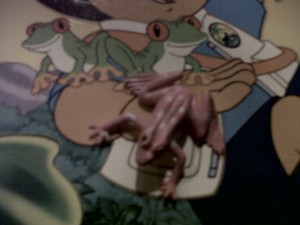The study of joints and their functions is known as arthrology. A joint is defined as any point where two bones meet, regardless of whether the bones form a joint capable of movement or not. Most joints are named after the bones that form the joint. Joints are generally classified as belonging to one of four types of joints; bony joints, fibrous joints, cartilaginous joints and synovial joints.
Bony Joints (Synostosis)
Bony joints, also known as synostosis, are composed of joints formed over the gap between two bones. Bony joints are immovable and help join two bones together to form a seemingly singular bone, such as the bones two bones that form the mandible in an infant. These two bones are joined together at some point during childhood by a bony joint.
Fibrous Joints (Synarthrosis)
Fibrous joints, also known as synarthrosis, are composed of joints formed by collagen fibers binding the bones of the joint together. There are three types of fibrous joints; sutures, gomphoses and syndesmoses.
Sutures
Sutures are fibrous joints that join the bones of the skull together. Sutures are only found in the skull and cannot be found anywhere else in the body. These sutures are typically immovable but may be slightly movable. There are three types of sutures; lap sutures, serrate sutures and plane sutures.
Lap sutures, also known as squamous sutures, occur when the two bones have overlapping edges. Lap sutures appear very smooth. The squamous suture, located between the temporal and parietal bone is an example of a lap suture.
Serrate sutures are formed by wavy lines that appear to be serrated, like the edge of a knife. The bones of a serrate suture interlock with one another. The lambdoid sutures that border the two parietal bones are an example of serrate sutures.
Plane sutures, also known as butt sutures, are formed when two bones do not have overlapping or interlocking edges, but rather just border each other. The suture located between the palatine processes of the maxillae in the roof of the mouth is an example of a plane suture.
Gomphoses
The teeth are not considered bones in the study of anatomy, however, the joints that anchor the teeth to the jaw are considered joints. This type of joint is known as a gomphosis and is composed of a ligament, known as the periodontal ligament, a collagen fiber responsible for anchoring the tooth in the socket. This fiber extends from the bony matrix of the jaw bones to the tooth. This joint is slightly movable, allowing for slight shifting of the teeth during chewing and biting.
Syndesmoses
A syndesmosis joint is composed of two bones bound together by long, collagenous fibers. These fibers are much longer than the fibers found within a suture or a gomphosis, and allow the joint more movement. The joint between the radius and ulna, located in the antebrachium (forearm) is classified as a syndesmosis joint.
Cartilaginous Joints
Cartilaginous joints, also known as amphiarthrosis joints or amphiarthrodial joints, are composed of two bones joined together by cartilage. Cartiliginous joints allow for relatively little movement. There are two types of cartiliginous joints; synchondroses and symphyses.
Synchondrosis joints are bound by hyaline cartilage. The attachment of the first rib to the sternum is by means of a synchondrosis joint.
A symphysis joint is formed by two bones joined together by fibrocartilage. The pubic symphysis, which allows for the slight separation of the pelvis during childbirth, is an example of a symphysis joint.
Synovial Joints
Synovial joints, also known as diarthrosis or diarthroidial joints, allow for much more movement than found in the fibrous joints or cartiliginous joints. Synovial joints contain what is known as synovial fluid, a fluid that lubricates and protects the bones of the joint The synovial joints are much more complex than any other joint in the human body. Some examples of synovial joints include the knee, elbow and wrist.
References
Saladin, Kenneth S.. Anatomy & physiology: the unity of form and function. 5th ed. Dubuque: McGraw-Hill, 2010. Print.
Bony Joints
Fibrous Joints – Gomphoses
Types of Joints
Syndesmosis Joints


